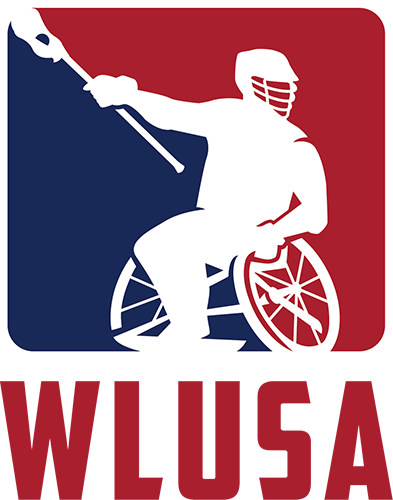Classification
Wheelchair Lacrosse USA currently uses two player classification categories: Disabled Athlete (DA) and Able-Bodied player (AB).
Qualification
To qualify as a Disabled Athlete, a player shall have a PERMANENT DISABILITY which consistently reduces their physical function to a degree that they cannot safely and enjoyably play running lacrosse as an able-bodied player. Such conditions may include but are not limited to: amputation or limb difference, partial to full paralysis, and partial to full joint immobility or replacement.
An otherwise able-bodied player with a TEMPORARY DISABILITY DOES NOT QUALIFY as a Disabled Athlete.
Policy on AB Players
The purpose of Wheelchair Lacrosse USA is to ensure that individuals with mobility disabilities have access to play the sport of lacrosse. Wheelchair Lacrosse USA rules permit the inclusion of Able-Bodied Players. However, teams are strongly encouraged to utilize AB players ONLY when there are not enough Disabled Athletes to field a full team.
Classification Rules
REGULATION PLAY: Each team may have a maximum of two (2) AB players on the court at all times during 7v7 regulation play.
OVERTIME PLAY: No AB players are allowed on the court during 4v4 overtime play or shootout, excluding Goalkeepers.
CHAIR MARKINGS: AB players’ sport chairs must be marked and clearly distinguishable by applying brightly colored tape or ribbon to the front and back of the chair frame.
CHAIR STRAPS: All players must wear a lap belt and foot straps in order to protect against injury and prevent an unfair advantage. Elevating above the seat cushion or using the foot to gain an unfair advantage is considered unsportsmanlike conduct and will result in a time-serving penalty.
Oops!
You have unsaved elements
Please save or cancel the pending changes to the elements within your page and then try saving again.
